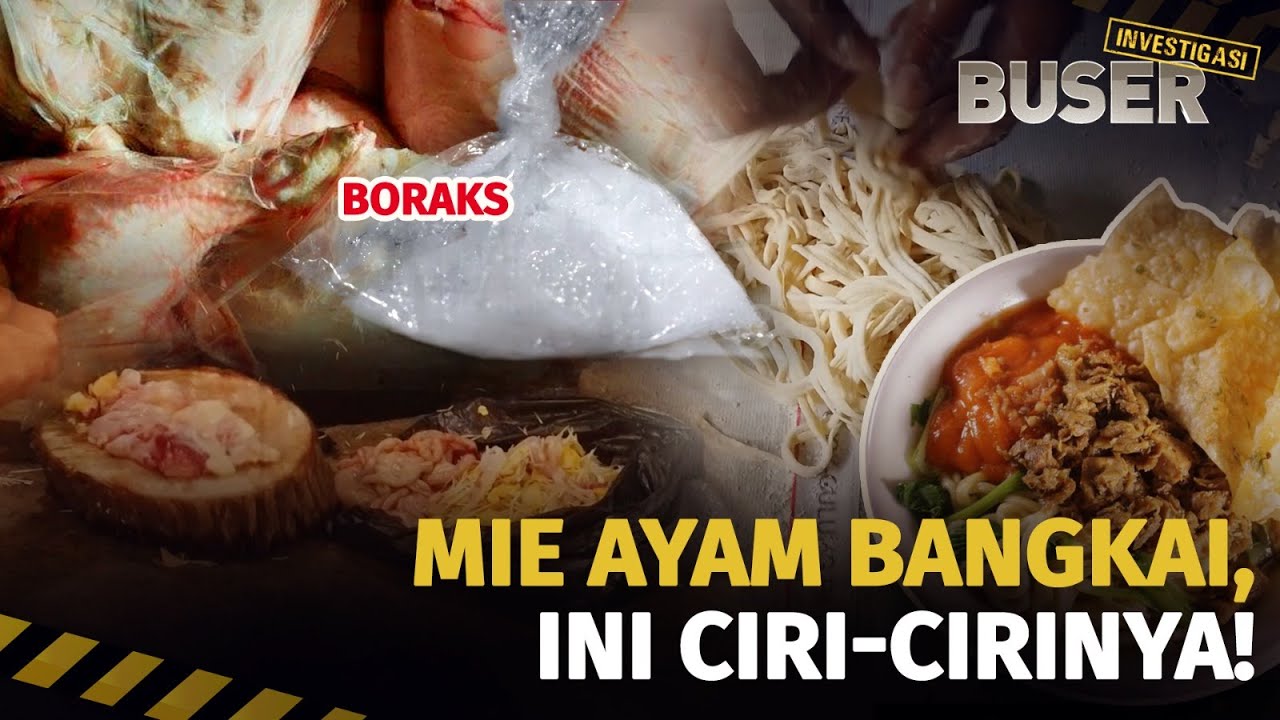Warning! Mochi Berpewarna Tekstil Oplos Buah Segar Busuk | Buser Investigasi
Summary
TLDRThis video explores the dangerous practice of making mochi with harmful ingredients such as artificial sweeteners, borax, and textile dyes, posing significant health risks to consumers. The video contrasts this with a safer approach where fresh, high-quality ingredients like food-grade colors and fresh fruits are used. It highlights the importance of consumer awareness when buying food, especially street food, and the risks of consuming improperly prepared products. The story also introduces safer alternatives by vendors who focus on quality and food safety, ensuring their mochi is delicious, fresh, and free of harmful chemicals.
Takeaways
- 😀 The mochi discussed in the script is made using low-cost ingredients to keep the price affordable but can pose health risks due to harmful additives.
- 😀 Some of the ingredients used in making the mochi include artificial sweeteners, industrial oils, and non-food grade food coloring, such as textile dyes.
- 😀 The script highlights a process where expired or poor-quality fruits are used to make mochi, compromising both flavor and safety.
- 😀 The use of cheaper, non-food grade ingredients like tapioca flour and artificial sweeteners, instead of higher-quality rice flour and sugar, helps reduce production costs but affects product quality.
- 😀 The inclusion of toxic substances like borax and artificial sweeteners like cyclamate can lead to severe health issues, including respiratory problems and even death in extreme cases.
- 😀 The mochi's texture and appearance are manipulated with cheap techniques, such as using synthetic oils and non-edible coloring, leading to deceptive packaging and presentation.
- 😀 The script investigates the local practices in making mochi and reveals the potential dangers of consuming mochi made with unsafe ingredients.
- 😀 The unhealthy preparation methods involve using expired or frozen fruits, such as strawberries and mangoes, which are repurposed and chemically treated to appear fresh.
- 😀 Despite the dangers, some sellers claim that their mochi products are fresh, using tactics like mislabeling or explaining the use of non-fresh fruit as part of the recipe.
- 😀 The investigation concludes that consumers should be cautious and choose mochi made with food-safe ingredients and fresh, high-quality fruits to avoid potential health risks.
Q & A
What is the purpose of the artificial sweetener mentioned in the video?
-The artificial sweetener is used to reduce costs, as sugar is currently expensive. It's not intended for food, but for textile use to help preserve the texture and color of fabric, making it more durable.
Why do the producers mix tapioca flour with glutinous rice flour for making mochi?
-Tapioca flour is used because it is much cheaper than glutinous rice flour. This helps in reducing the overall cost of production while still achieving a similar texture.
What was the role of the artificial ingredients in the mochi production process?
-The artificial ingredients, including artificial sweeteners and textile dye, were used to enhance the color and texture of the mochi. However, these ingredients are not safe for consumption, as they are not intended for food.
What health risks are associated with consuming the mochi described in the video?
-Consuming the mochi made with unsafe ingredients like borax and artificial sweeteners can lead to severe health issues, including respiratory problems, digestive issues, and even death in extreme cases.
How did the mochi makers ensure the fruit remained 'fresh' despite using old or spoiled fruit?
-The producers soaked the fruit in a solution (borax, in this case) to preserve its texture and appearance, making it seem fresh and crunchy, even though it was old or spoiled.
What was the key difference between the mochi made using artificial ingredients and the one made with natural ingredients?
-The mochi made with natural ingredients was softer, more delicate, and had a shorter shelf life, while the one made with artificial ingredients was firmer, more durable, and could last longer.
How was the fruit used in the mochi prepared to avoid consumers noticing its poor quality?
-The fruit, particularly strawberries, was frozen to reduce cost and preserve it longer. It was then disguised by mixing it with syrup or jam to mask its altered taste and texture.
Why did the producers use textile dye in the mochi-making process?
-Textile dye was used to give the mochi a bright and appealing color, as it was much cheaper than food-safe colorants. However, this made the mochi unsafe for consumption.
What safety standards did the mochi makers from Bandung adhere to in their production?
-The mochi makers from Bandung used natural ingredients and ensured that their products were made with food-grade colorants and fresh, premium ingredients to avoid the health risks associated with artificial additives.
What key lessons were highlighted in the video regarding food safety and production?
-The video emphasizes the dangers of using unsafe ingredients, like borax and textile dyes, in food production. It also highlights the importance of using natural, food-safe ingredients and maintaining hygiene in food preparation to ensure consumer safety.
Outlines

This section is available to paid users only. Please upgrade to access this part.
Upgrade NowMindmap

This section is available to paid users only. Please upgrade to access this part.
Upgrade NowKeywords

This section is available to paid users only. Please upgrade to access this part.
Upgrade NowHighlights

This section is available to paid users only. Please upgrade to access this part.
Upgrade NowTranscripts

This section is available to paid users only. Please upgrade to access this part.
Upgrade NowBrowse More Related Video

Mochi Imut Berselimut Boraks | Buser Investigasi

NET. JATIM - JAJANAN MENGANDUNG BAHAN KIMIA BERBAHAYA

The 10 Dangerous Foods RFK Jr. Just BANNED

Dark Reality of Cold Drinks | Dhruv Rathee

Bahan Berbahaya Ditemukan dalam Produk Kosmetik, Ini Dampaknya Jika Digunakan

Awas! Mie Ayam Bangkai Anti Basi | Buser Investigasi
5.0 / 5 (0 votes)